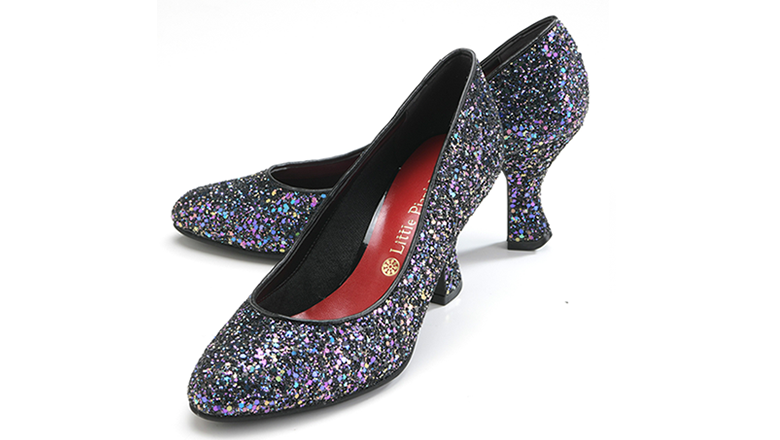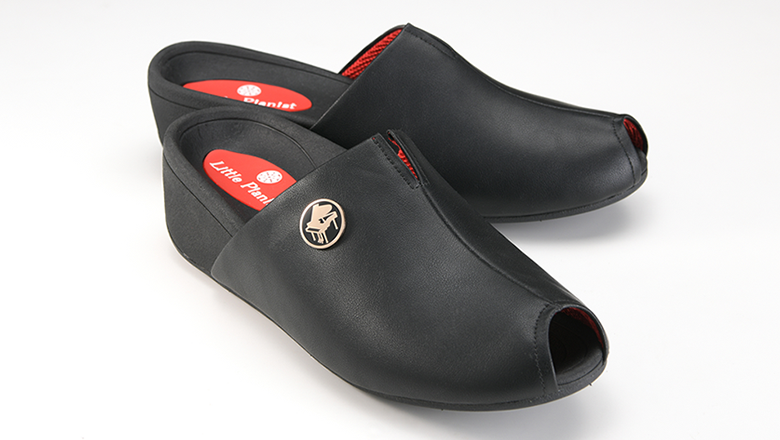The World’s First “Piano Shoes” for Playing Piano
To free all pianists from the burden on their feet during performances.

In 1780, following the development of the damper pedal by a British piano maker, the world’s first “piano shoes” specialized for piano pedaling were born.
After obtaining a patent, these shoes were developed under the supervision of Dr. Kazutaka Adachi, a PhD in Science from the University of Tokyo, with the theme “to free all pianists from the burden on their feet during performances.”
Through repeated prototypes, experiments, and improvements, the piano shoes were developed.
They are now used in prestigious international piano competitions, such as the International Chopin Piano Competition, and are loved by more than 10,000 users worldwide.
Little Pianist is the only store in the world that specializes in piano shoes designed specifically for piano pedaling.
Why Were Piano Shoes Created?
The world’s first piano shoes were born from a mother’s desire to help her daughter, who was struggling with pedal work during piano practice.
She thought, “I want to make it easier for her somehow.”
Pedaling plays a significant role in determining contest evaluations. Since pianists always wear shoes during performances, it’s important to get used to them from practice. It’s surprising that they didn’t exist before, as they’ve now become an essential item for performers.

Not Just Shoes, but a Tool Essential for Performance
– Differences from Ordinary Shoes –


- The point of contact between the heel and the floor, which serves as the pivot point during pedaling, is supported not by a point but by a surface, providing stability for the heel.
- The curved shape of the heel allows for smooth pedal operation and enables fine adjustments to the pedal depress.
- The heel position makes effective use of the pedal’s rebound force, reducing muscle strain.
To Perform at Your Best on Stage
Pianists practice daily, all for that one performance on the stage. In piano competitions, it’s even more intense, as a single performance determines the outcome. Many have probably experienced the frustration of not being able to perform as they had hoped.
“I want to show my full potential on stage.” For that, stable pedal performance is essential.
With the world’s first piano shoes, specifically designed for piano pedaling, you can achieve the beautiful sound and brilliant performance you’ve dreamed of, and bring your ideal music to life on the stage.
Piano Shoes Scientifically Recognized through a Research Presentation by a PhD from the University of Tokyo at a Conference in Berlin, Germany
Playing the piano involves operating the pedals, but the shoes used to operate the pedals are used for general walking, so they are not suitable for operating the pedals. Attention may need to be paid to the motion of the body segments below the knee.
Therefore, we developed shoes “Little Pianist” specifically designed for pedal operation based on functional anatomy and biomechanics. Extensive experimental studies were conducted with pianists as test subjects to perfect this specialized footwear in cooperation with Dr. Kazutaka Adachi, a PhD in Science from the University of Tokyo.

The ergonomically designed, pianist-first piano shoes, created in Japan, were later presented at a prestigious academic conference in Germany, the home of classical music, which produced great Maestros such as Beethoven, Bach, and Brahms —the International Association for Music & Medicine (IAMM) and the International Society for Arts and Medicine (ISfAM), at their joint event, “The Future of Music and Arts in Medicine and Health: IAMM & ISfAM – Berlin 2024.” The research, titled “Validation of Shoes Specialized for Pedal Operation in Piano Performance,” was presented as a world-first study focusing on the muscles and bones of the pianist’s pedaling foot. While there have been numerous studies on the upper body and arms of pianists, this was the first research of its kind to address the lower limbs.
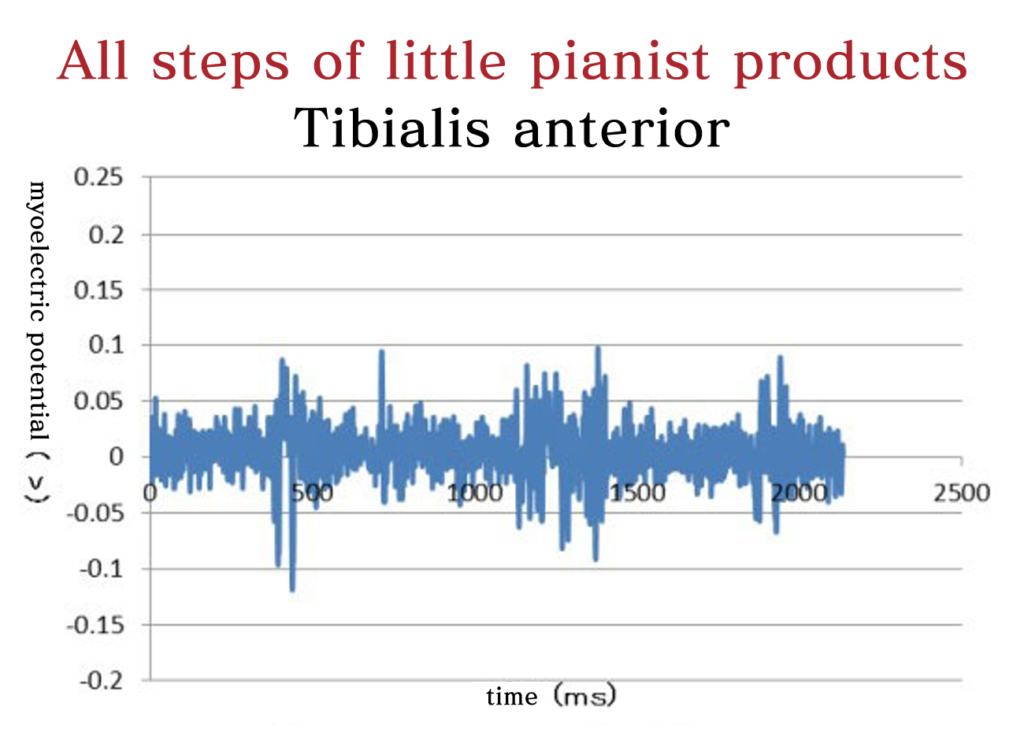

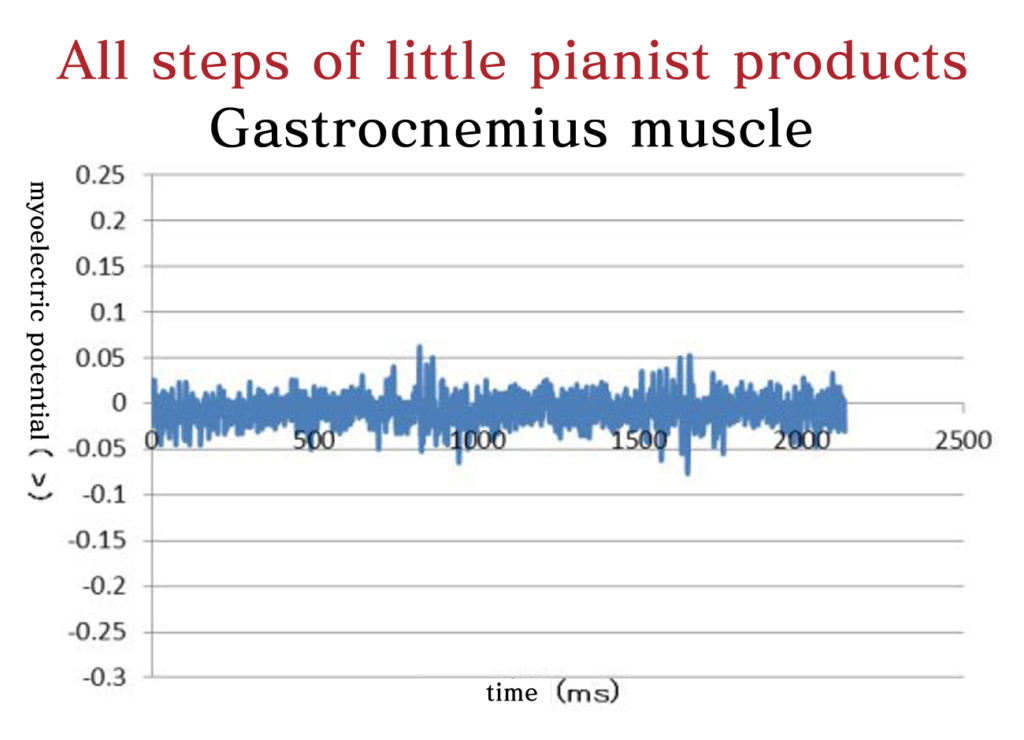


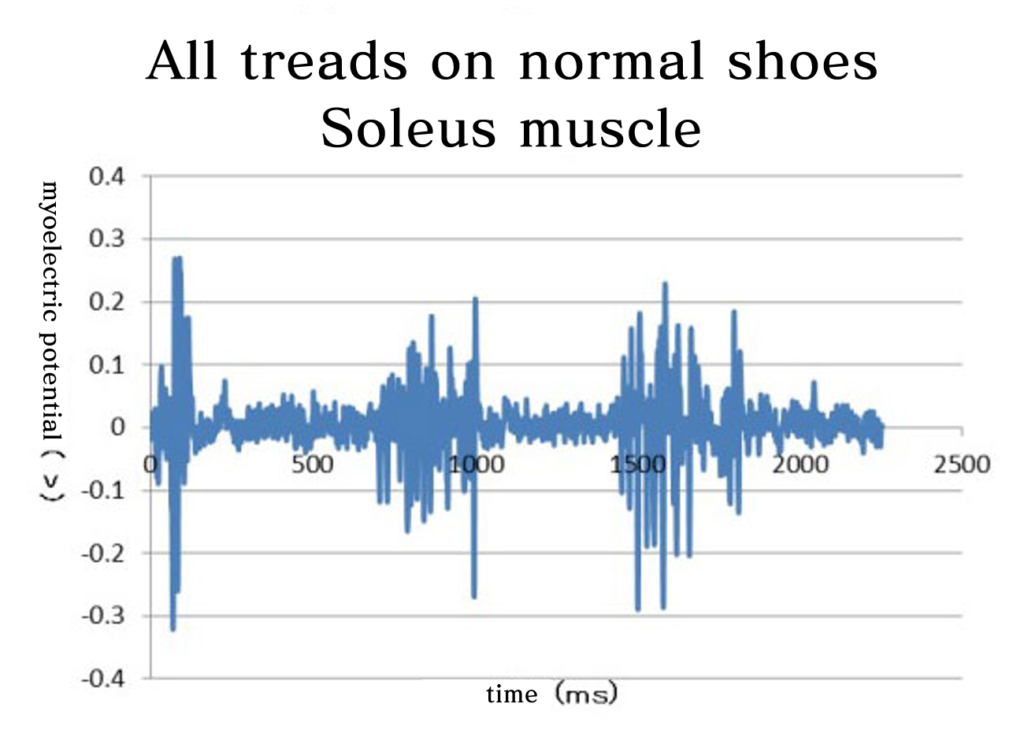
Experts Also Sound the Alarm: Reducing the Impact of Pedaling Strain on Pianists’ Bones and Muscles
-760x570-1.jpg)

An experiment was conducted, gathering pianists to quantify the strain on their feet during pedaling and to measure the effects. Using electromyography and accelerometers, the strain on the feet during performance was measured, and it was proven that wearing piano shoes reduced muscle load and minimized lateral instability of the feet. Pedaling exerts a force of 5 to 7 kilograms on the right foot alone, and without appropriate footwear, this can impact the bones.
Magical Shoes That Allow Pianists to Focus Their Brain on Finger Movements
Piano shoes are ergonomically designed, with the hardness and shape of the sole, as well as the curvature of the heel, carefully considered. Pedaling becomes easier and more precise because the pivot point is located near the joint directly under the foot.
This reduces the strain and attention needed for the feet, allowing the brain to focus more on finger movements.
“I want to become one with the piano”
– Evolving with the Voices of Pianists
2014: Mayumi Kurachi, CEO of Little Pianist Corporation, invented “piano shoes” for her daughter, who was struggling with pedal operation. She thoroughly researched and gathered data on piano shoes for the benefit of piano performers around the world. A patent for “piano shoes” was obtained.
2015: A special feature on “piano shoes” was aired on TV Tokyo, leading to an overwhelming number of inquiries from piano players struggling with pedal work at instrument stores across the nation (YAMAHA stores and KAWAI stores).
Sales began at 40 musical instrument stores nationwide.
The piano shoes won the GOOD DESIGN AWARD.

2016: Piano shoes were selected as a supplementary prize for the International Chopin Piano Competition in Asia.
2017: Costume collaboration for the Toho film The Forest of Wool and Steel.
2018: Piano shoes were used at CHANEL’s Pygmalion Days event. They were also exhibited at the Milan Salone in Italy.
2019: Exhibited at the China International Import Expo (CIIE) in Shanghai. Sponsored the Shigeru Kawai International Piano Competition.
2020: Sponsored the “Elise Music Festival for Adults” piano competition.
2021: Sales began at department stores across Japan. Sponsored the Romania International Music Competition.
2022: Conducted joint research with the University of Tsukuba, performing validation experiments on the piano shoes. Sponsored the Japan Beethoven Piano Competition.
2023: Mayumi Kurachi, CEO of Little Pianist Corporation, was featured as the developer of the piano shoes in a special program on NHK, which broadcast the story of the shoes’ creation nationwide. The broadcast received a tremendous response, leading to a flood of orders. Obtained a second patent for the “piano shoe sole.”
2024: Successfully presented the research on piano shoes at the International Association for Music & Medicine (IAMM) conference in Berlin, Germany.


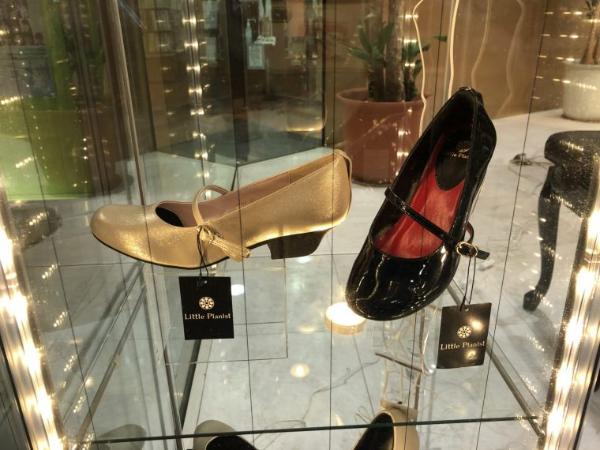





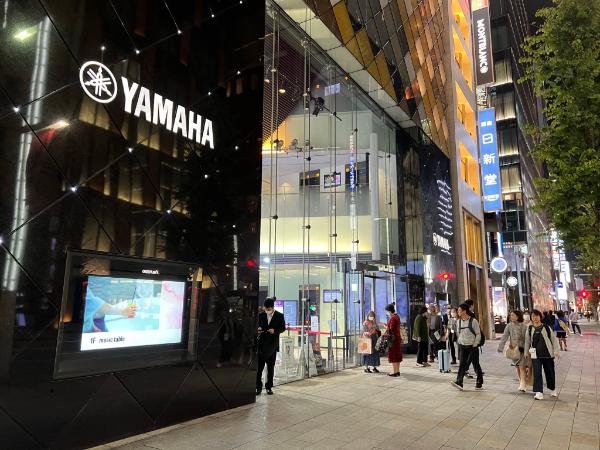



“Little Pianist,” the Piano Performance Shoes That Opened a New Era of Innovation in Japan – Now Ready to Reach Pianists Around the World

The reason why these innovative piano shoes became a hugely popular hit is that they were created by thoroughly researching and solving the problems faced by pianists. “I want to perform at my best on stage.” For this, stable pedal performance is essential. We proudly present the world’s first piano shoes specifically designed for piano pedaling to meet those needs. From young pianists to piano teachers, music students, and professional performers, we hope these shoes can support and be cherished by all players, helping to enhance their important stage performances.
About the Symbol Mark of Little Pianist

The symbol mark of “Little Pianist,” the piano performance shoes that make pedaling easier, is designed with the musical symbol senza, which signifies releasing the pedal, as its motif. It embodies the wish that everyone around the world can deliver captivating and beautiful performances on stage.
A Pianist’s Confidence Comes from Their Feet
Voices of Pianists Active Around the World
“The greatest appeal of these piano shoes is that they allow me to pedal exactly as I want, as if I were pressing the pedals barefoot.”
Pianist Takako Takahashi
5th Prize:12th International Chopin Piano Competition (Poland, 1990)

Thanks to the unique nature of these shoes, the pianist enters the stage in silence. And with the most minimal of fatigue, they are able to perform pedaling of the finitist nuances, that which he imagined in his mind and heard in his heart.
scar Wong, pianist
1st Prize: Premio Elisabeth Tschaikowsky (Switzerland, 2022)
1st Prize: International Chopin Competition in ASIA (Japan, 2023)
1st Prize: Antoni Radzwill International Piano Competition (Poland, 2024)
Pianist : Takako Takahashi/Chopin, Frederic:Scherzo no.2 b-moll Op.31 CT198
Pianist Dan Zhaoyi(但 昭義)

Visiting professor at Central Conservatory of Music (中央音楽学院) and Shanghai Conservatory of Music(上海音楽学院) Distinguished Professor at Sichuan Conservatory of Music(四川音楽学院)Professor Emeritus at Shenzhen Art School(深圳芸術学校)
Famous disciples : Yundi Li(李雲迪/ユンディ・リ)Sa Chen(陳薩/サー・チェン)Haochen Zhang(張昊辰/ハオチェン・チャン)、
They have won the International Chopin Piano Competition、Leeds International Piano Competition、Van Cliburn International Piano Competition.

Pianist DANG Thai Son

1th Prize:10th International Chopin Piano Competition (Poland, 1980)
Distinguished Professor at New England Conservatory of Music and Oberlin Conservatory of Music
Famous disciples : Bruce Xiaoyu Liu(劉曉禹/ブルース・シャオユー・リウ)
Jury member of prestigious international competition : International Chopin Piano Competition・Cleveland International Piano Competition・Concours International De Piano Clara Haskil・Rubinstein International Piano Competition・Feruccio Busoni International Piano Competition・Sydney International Piano Competition・Montreal International Musical Competition・Hamamatsu International Piano Competition

To Little Pianist
With great thank for the pleasure weaning this beautiful concert shoes!
So helpful for using pedal.
Dang Thai Son

